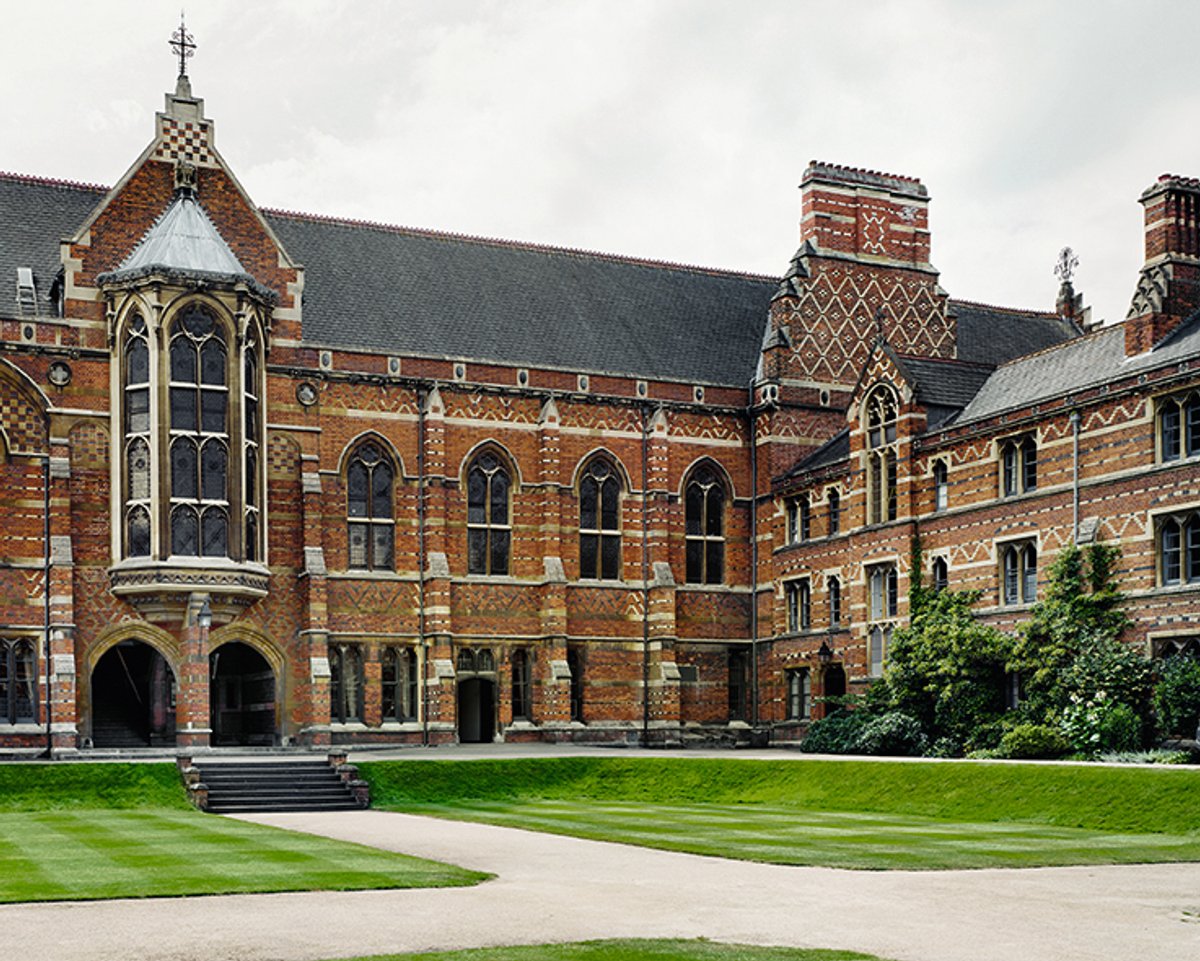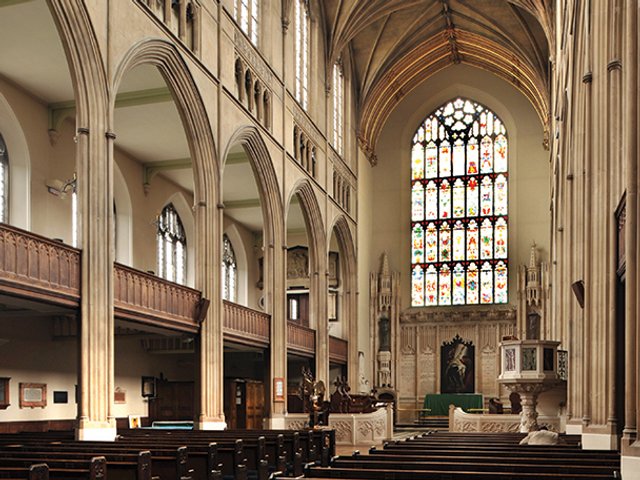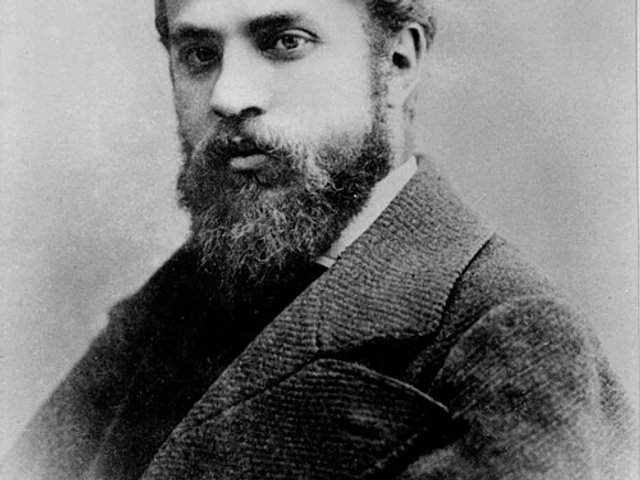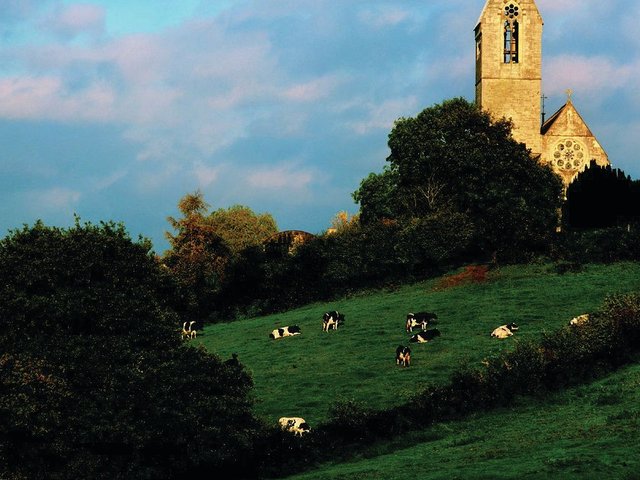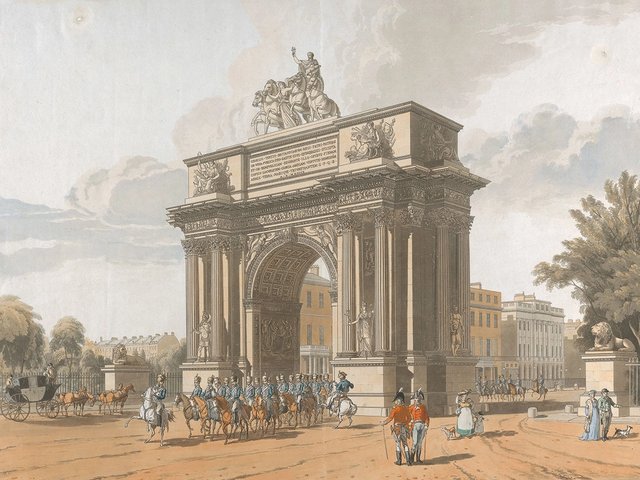In 1971 Paul Thompson published what Nicolas Olsberg calls his “temperate, wise and comprehensive monograph” on the architect William Butterfield (1814-1900). Thompson dealt with the buildings by topics such as the wall, the roof and colour. He included a “Catalogue of Architectural Works” and a further one of “Other Designs”, which has relieved Olsberg of the necessity to do likewise.
Thompson’s arrangement led to complaints that it is difficult to focus on any one structure. In contrast, Olsberg deals with individual buildings—often little-known examples—and his sympathetic and perceptive accounts offer not just architectural analysis, but well researched and informative background material to each commission.
The former director of the Canadian Centre for Architecture in Montreal and the founding head of special collections at the Getty Research Institute in Los Angeles, Olsberg uses an astonishing range of Butterfield’s neat and attractive drawings as the principal part of his colour illustrations. There are also numerous black-and-white pictures, many of them historical, and several specially commissioned colour photographs by James Morris.
Ecclesiastical authority
Butterfield was born in London and apprenticed to a builder. He later worked under the architects Edward Lushington Blackburne (1803-88) and Harvey Eginton (born around 1809, died 1849). Closely associated with the Cambridge Camden (later Ecclesiological) Society, promoting “the study of Gothic Architecture, and of Ecclesiastical Antiques”, Butterfield was the Tractarian architect par excellence: a movement within the Anglican church, led by Butterfield’s contemporaries John Henry Newman and John Keble, which asserted the doctrinal authority of the Catholic church.
Butterfield’s Anglican parish church, All Saints Margaret Street, London (1850-59), made of polychrome brick, caused a sensation and was considered the masterpiece of High Victorian Gothic. In 1884 he received the Gold Medal of the Royal Institute of British Architects.
The individual buildings chosen for discussion include such prime examples as All Saints and Keble College, Oxford (built 1868-70), where, in an unusual error, Olsberg refers to the consecration of the chapel, something which the founders were determined to avoid, as it would have made it liable to diocesan control. Less familiar buildings include Exeter School, the Gordon Boys’ Home near Woking, Surrey, and hospitals in Winchester and Cheddar. Accounts of village churches emphasise the importance of the accompanying schools and parsonages.
The patrons, both clerical and lay, are interestingly characterised. They include two parsons who set up schools for boys from less-well-off homes, St Andrew’s College at Harrow and the school at Hellidon in Northamptonshire. A whole chapter deals with Rugby School, which the author attended and where he learned to appreciate Butterfield.
Olsberg’s subject is now properly appreciated, but this has not always been the case. In 1866 Benjamin Jowett wrote that in choosing Alfred Waterhouse as architect for the new front of Balliol College, Oxford, “we hope to avoid eccentricity and un-English styles and fancies”. He was referring to Butterfield’s chapel at Balliol of 1856-57. By 1911 this chapel was still so unpopular that a proposal was put forward to demolish and replace it with a paraphrase of the previous Tudor building.
This did not happen, but Butterfield’s interior was thoroughly spoilt, in what the novelist Evelyn Waugh called its “disastrous deformation”. In 1945 John Summerson, the celebrated historian of Georgian architecture, published his notorious article, “William Butterfield, or the Glory of Ugliness”.
Olsberg might have devoted some space to an assessment of Butterfield’s character, which has been seriously misunderstood as bigoted, humourless and unsociable. His letters show that he had some intimate friends, not least the architect of Westminster Cathedral, John Francis Bentley (1839-1902). He had the reputation of being a ruthless restorer of medieval churches, but when charged with the rebuilding of St James’ Church in Christleton, near Chester, his proposal to retain the medieval tower was challenged.
He replied: “Half the buildings in Europe owe their character and interest to this system of preserving what is sound of the older parts. This country is an old country but if we don’t take care it will soon be as new a one as America.”
With Thompson and now Olsberg we are fortunate to have two authoritative, highly intelligent and complementary monographs. Together they celebrate Butterfield’s brilliance at architectural composition, his original detailing and mastery of colour.
• Peter Howell’s latest book is The Triumphal Arch (Unicorn Publishing 2021)
• Nicholas Olsberg, The Master Builder: William Butterfield and his Times, Lund Humphries, 432pp, 270 colour & 157 b/w illustrations, £60 (hb), published 10 October 2024


